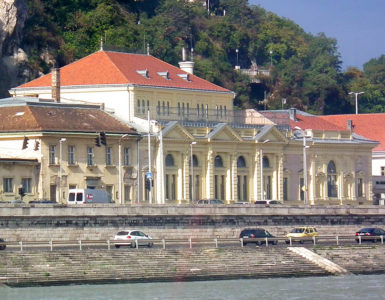“Wherever we go, we will go together, and I will be your home.”
— from our wedding vows
What does home mean to you?
For more than seven thousand years, people have called the Shetland Islands home. The more ancient the people, the less we know about them — but what we do know about them, we tend to know from the homes they built.
Five thousand years ago, Shetland Islanders piled up stones to build little “round houses” — squat, stone huts with cone-shaped roofs. (Imagine a well with one of those pointy wicker hats from Viet Nam on top.) A few of these, buried in sand and lost until just recently, survive. To this day, the central room feels cozy and protected. You can imagine snuggling under hides in one of the six or seven little alcoves spaced evenly along the walls.
About two thousand years later, round houses evolved into broches — stone towers, several stories tall. Archeologists claim these had cone-shaped thatched roofs and served as places of refuge during attacks. But locals shake their heads at this, noting that the openings in the broches align perfectly with the sun at various times of the year. You might have called a broch “home,” but it was also your clock and calendar.
When the Vikings arrived two thousand years later, they built long, rectangular family halls right on top of the ruins of the round houses.
And two thousand years after them, locals built “croft houses” — smaller homes, inspired by the Viking plan, with thatched roofs, fireplaces for burning peat, wooden cupboards for sleeping in, and the latest amenity: indoor barns.
(“With an indoor barn, there’s no popping outside to tend the animals in the harsh winter temperatures! A clever stone trough channels urine outdoors, and there’s plenty of room to pile human and animal manure right there on the floor — until spring comes, when you can use it as fertilizer!”)
Today, locals are slapping up pre-fabricated wooden and concrete homes that will be lucky to last a few decades before collapsing into rubble. Will your great-great-great grandchildren be touring these homes five thousand years from now? In a word: no.
Whether or not my own house — a brick and mortar tower in the center of Midtown Atlanta — will stand the test of the centuries remains to be seen. (I suspect, at some point, they’ll need the space for a parking garage, and down our condo will come.) I have to say, though, that for me, home is not so much a place as it is a state of being.
Our marriage vows ended with a phrase that might sound strange to some: “Wherever we go, we go together, and I will be your home.”
For me, no truer words were ever spoken. When I’m traveling with Clyde, I don’t get homesick … because wherever we are together, I’m home. We’ve lived in many houses. We’ve gone to many places. But my home — where the heart is, as they say — is bound up in being right here, right now, in this place, with him by my side.
Five thousand years from now, you won’t be able to dig that home up and drag tourists through it. But, as I grow older, I suspect that all that lives after us — all that matters, all that truly endures — are the connections we forged in our hearts. I believe those connections may be all we carry with us when we pass from one world to the next.
Today, standing in a five thousand year-old stone house in the Faroe Islands, I take great comfort in the idea that, in a certain sense, as long as I am connected to Clyde, I will always be at home.









Any news from the croft house would be appreciated . Did you find any history on the croft’s or was that just the name of this house.
Barbara Croft